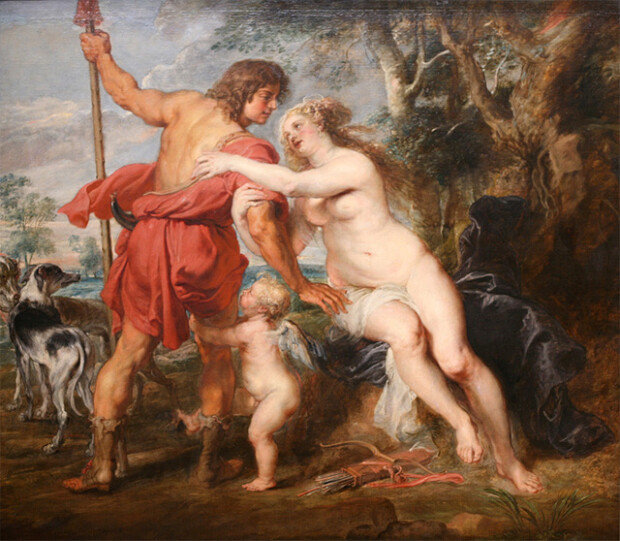Recklessness and courage
Recklessness and courage
Posted September. 03, 2020 07:40,
Updated September. 03, 2020 07:40

Peter Paul Rubens, a Flemish court painter in the 17th century, was skilled at painting religious paintings and portraits but had a keen talent in expressing mythical themes. Thanks to his extensive knowledge on classical literature, he was praised for perfectly creating expressive paintings, no matter how complex the theme was.
“Venus and Adonis,” which Rubens finished in his later years, is based on the myth by Venus and Adonis. It was based on the theme of Metamorphoses created by Ancient Roman poet Ovidius, referring to Titian’s previous painting. Venus shot by Cupid falls in love with Adonis, a handsome hunter. Madly in love, she immediately adopted hunting as her hobby, which she had no interest in. One day, when Venus was not able to join him on a hunting opportunity, Venus warned Adonis of danger and advised him not to go.
This scene was captured by Rubens. Adonis, clothed in red, is holding a spear in his hand to go hunting, while a nude Venus is clinging at his arm with her hands, begging him not to go. Even Cupid is holding him back by attaching himself to Adonis’ leg.
Rubens described Venus as an abnormally pale and plump woman, Adonis as a muscular and tanned man. Though it appears rather exaggerated, the voluminous and attractive image is exactly what Rubens wanted to express as an ideal human body. The strong colors, unfettered strokes and voluminous expressions and drama-like scene are all typical features of a Rubens.
Had Adonis taken Venus’ advice? Of course not. Flaunting his manliness, he went off hunting and was killed by a wild boar. It was recklessness that brought his miserable fate. Being reckless and being courageous are different. It is important to comply with alerts on danger – perhaps this is the message conveyed to us by the 17th-century painting.
Headline News
- Med professors announce intention to leave hospitals starting Thursday
- Bridge honoring Sgt. Moon Jae-sik unveiled in Pennsylvania
- Chief of Staff Chung tells presidential secretaries to stay away from politics
- US FTC bans noncompete agreements
- N. Korea launches cyberattacks on S. Korea's defense companies







